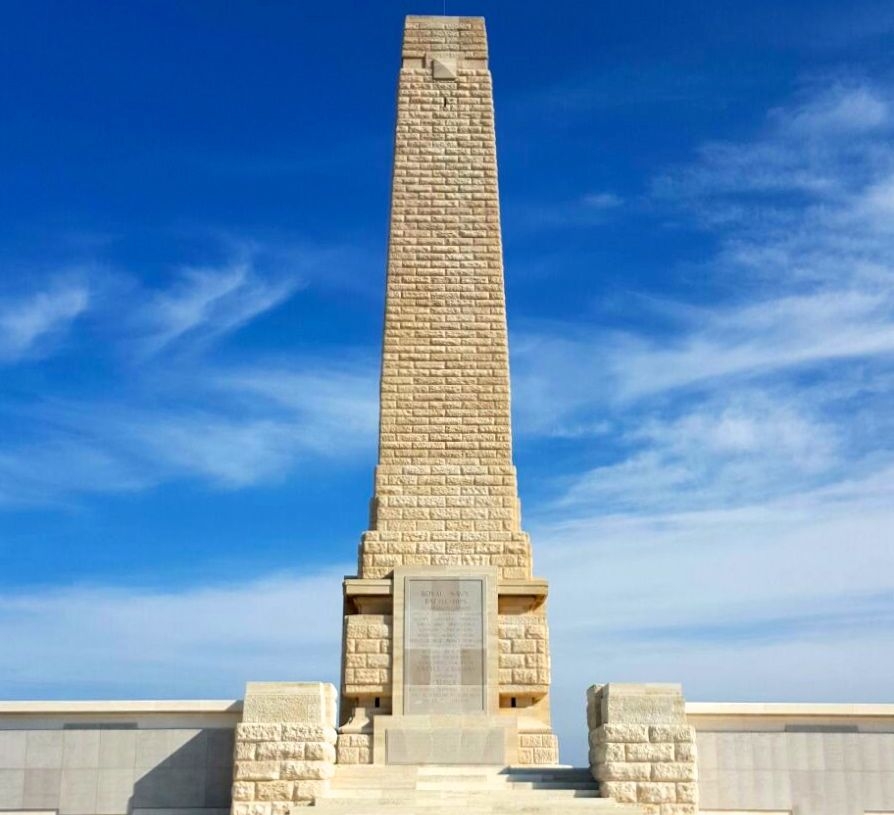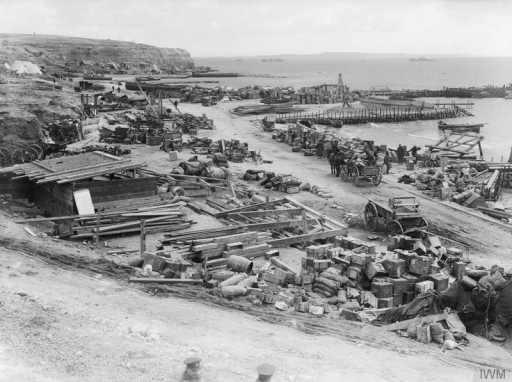The last Allied positions were evacuated at Cape Helles on January 9th 1916, ending the controversial Gallipoli campaign.
More than 30,000 British, Commonwealth and French soldiers were taken off the beaches in the opening days of the New Year.
Large quantities of equipment and ammunition were also ferried away or disabled to stop Turkish forces using them. But much was left behind. Hundreds of mules and horses were destroyed.
Troops from the Newfoundland Regiment, deployed to Gallipoli in September 1915, formed part of the Allied rearguard. Newfoundland, now a Canadian province, was then a self-governing British dominion.
Casualties were minimal, despite a final attack ordered by General Otto Liman von Sanders, German commander of the Ottoman Army at Gallipoli.
The pull-out in the early hours of January 9th signalled a significant Ottoman victory, and a conspicuous Allied failure.
 The Helles Memorial to Commonwealth troops who fell at Gallipoli (Photo: © Centenary News)
The Helles Memorial to Commonwealth troops who fell at Gallipoli (Photo: © Centenary News)
Helles, at the southern tip of the Gallipoli peninsula, had been the scene of the main British-led landings in April 1915 aimed at taking control of the Dardanelles Strait and knocking Turkey out of the war.
But little progress was made beyond the beachheads in more than eight months of fighting.
Britain’s War Minister Lord Kitchener backed withdrawal after visiting the front in the autumn.
The evacuation of the Helles garrison followed the departure of Australian, New Zealand and British forces from Anzac Cove and Suvla, further up the coast, in December.
All sides suffered heavy losses at Gallipoli. Casualties totalled more than 500,000 (killed, wounded or missing). Disease took a heavy toll on the Allies during the heat of summer.
Gallipoli made and broke reputations, and is seen as a defining episode for Australia, New Zealand and Turkey.

Memorial to Mustafa Kemal Atatürk at Chunuk Bair, pictured in October 2015. The Turkish flag is flying at half mast following twin bomb attacks in Ankara (Photo © Centenary News)
Turkish commander Mustafa Kemal came to prominence for his defence of the Ottoman lines at critical moments, and went on to found the modern Republic of Turkey after the First World War.
Winston Churchill, a keen supporter of the Dardanelles campaign, was demoted from his job as Britain’s navy minister in May 1915 and later resigned from the Government.
The British commander-in-chief, General Sir Ian Hamilton, was sacked in October as political and military leaders wrangled over the continuing stalemate.
The campaign had been promoted as a way of getting round the deadlocked Western Front in the fight against the Central Powers (Germany, Austria-Hungary and Turkey).
For Australia and New Zealand, Gallipoli played an important part in shaping their national identities. April 25th, the anniversary of the landings, is remembered every year with Anzac Day dawn services.
One of Australia’s most distinguished Second World War commanders, General Sir Leslie Morshead, was a junior officer at Gallipoli.
In 2015, the centenary of the Dardanelles campaign was marked with a series of international commemorations at Gallipoli and across the world.
Sources: Wikipedia/various
Images courtesy of Imperial War Museums © IWM Q 13708 (Cape Helles 1916): Helles Memorial & Mustafa Kemal Atatürk Memorial © Centenary News
Posted by: Peter Alhadeff, Centenary News
